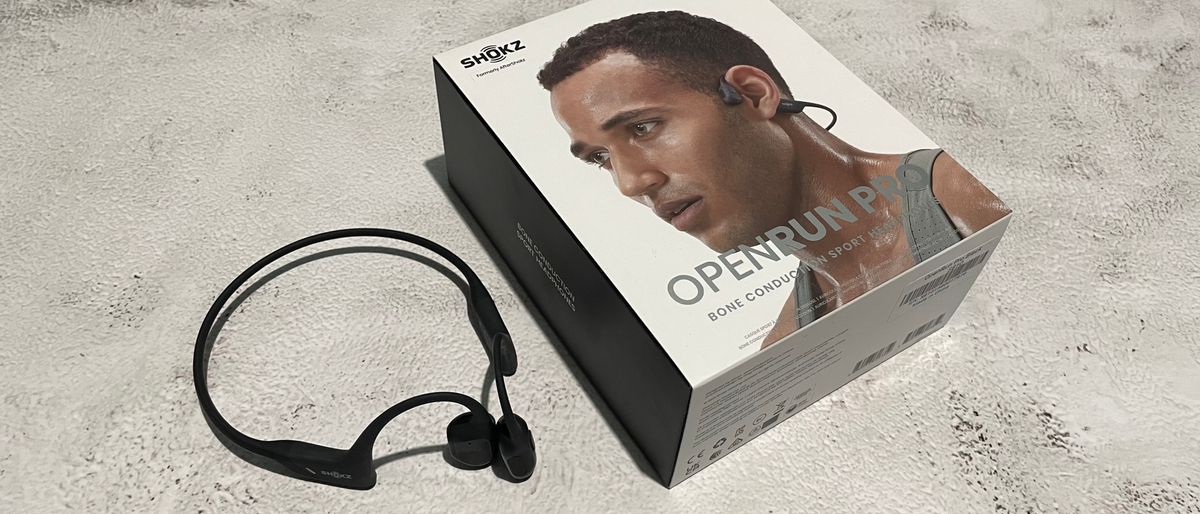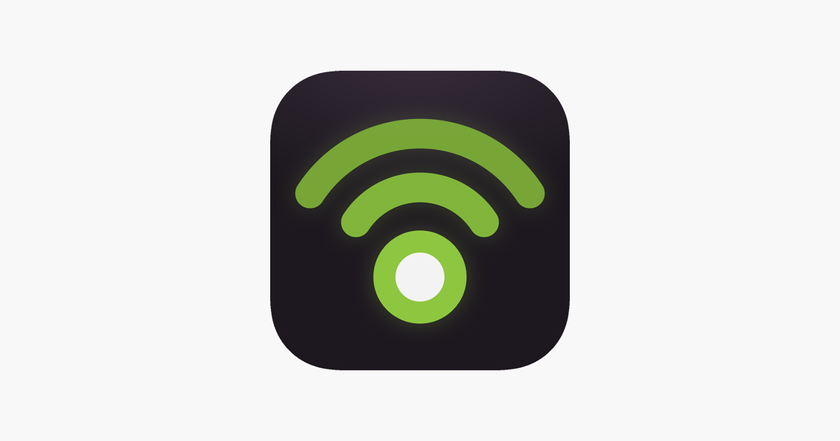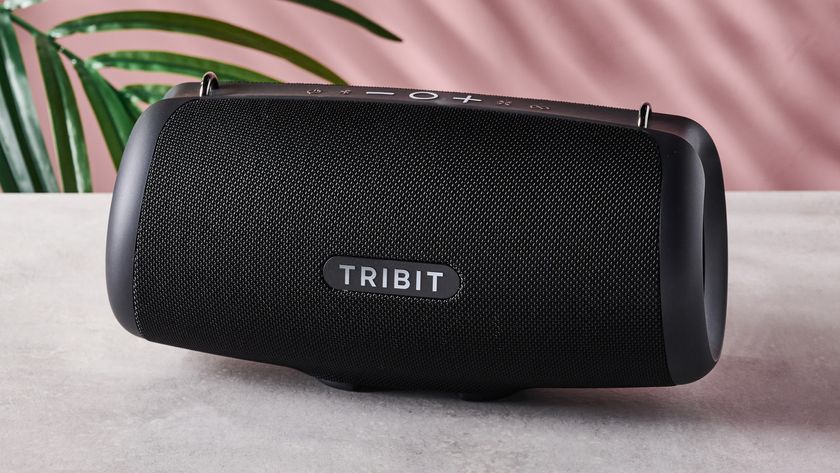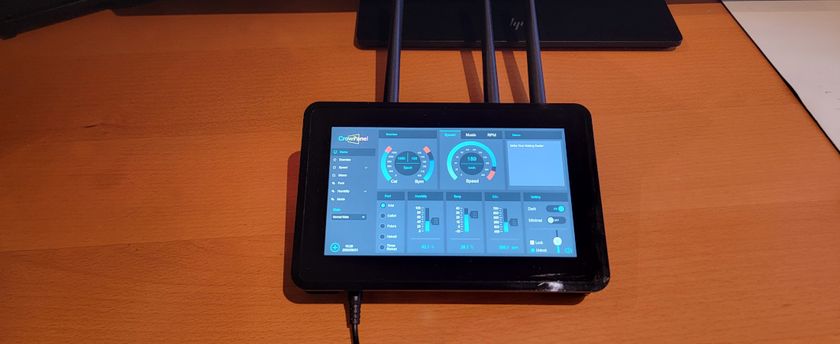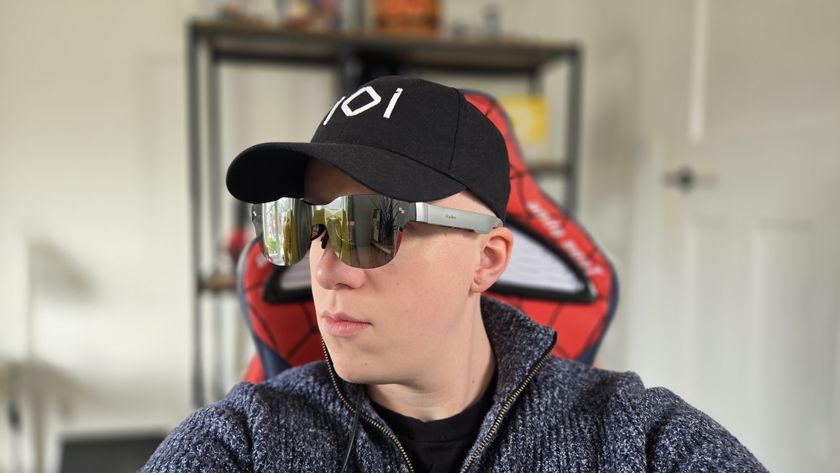TechRadar Verdict
The OpenRun Pro are the best-sounding bone conduction headphones we've tested, and mean you no longer need to make big compromises on audio quality if you want to opt for an open-ear headset. They also boast an impressive quick charge function that delivers an hour and a half of playback after just five minutes of charging, while a full charge will keep them going for up to 10 hours. The downside of the upgraded hardware is that they now vibrate more noticeably against your skin. If you can tolerate that tickle though, they're easy to recommend.
Pros
- +
Greatly improved sound
- +
Light and comfortable to wear
- +
Quick-charge feature
- +
Larger, easier to use controls
Cons
- -
More noticeable vibrations
- -
More expensive than OpenRun
Why you can trust TechRadar
Editor's Note
• Original review date: July 2022
• OpenRun Pro 2 launched August 2024
• Launch price: $179 / £159.95 / AU$250
• Official price now: $179 / £159.95 / AU$250
Update: November 2024. The Shokz OpenRun Pro are some of the best bone conduction headphones on the market, but they're no longer Shokz's latest and greatest. The company unveiled its OpenRun Pro 2 earlier this year, and the new version boasts better audio thanks to a new driver for the high and mid ranges. There's also an integrated air conduction driver for bass, new dynamic 3D audio, and four EQ modes.
Vibrations have also been reduced, and you'll get an extra two hours of battery life to boot. However, you'll find the OpenRun Pro 2 often priced at around $179 / £159.95 / AU$250, whereas the original OpenRun can often be found for less than $100/£100 in major deals events. As such, if you can get them at a good price, they're definitely still worth considering in 2024.

Two-minute review
Shokz (formerly known as AfterShokz) has long held the top spot in our guide to the best running headphones, and the OpenRun Pro are its best-sounding headphones yet.
The main difference between this new set of headphones and the Shokz OpenRun (originally called the Aeropex) is the addition of new bass transducers to the pads that channel vibrations to your aural nerve.
The upgrade is immediately noticeable when you hit play, and means opting for bone conduction rather than in-ear headphones no longer means a big compromise on sound quality. It's particularly impressive if you enjoy heavy music, which is far richer than with other bone conduction headphones.
The downside of the new transducers is the way they vibrate more noticeably against your skin. It's no more than a tickle, but if you prefer to run with the volume high then you may find it becomes irritating over time. All bone conduction headphones suffer from this to some extent (it's pretty much unavoidable due to the way they work) but the extra bass means it's particularly tangible here.
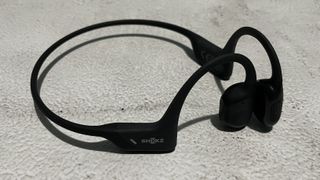
The other upgrades here are small, but thoughtfully designed. For example, the control buttons used to adjust power, volume, and tracks are now slightly larger so they're easier to press when you're wearing the headset. Shokz has also relocated the OpenRun Pro's charging connector so it's no longer occupying the same area as the buttons, and is easier to use.
Like the recently upgraded OpenRun, the OpenRun Pro have a quick charge feature that gives you an hour and a half of playback after just five minutes of charging; a game-changer if you've forgotten to power them up and it's time to hit the gym. If you rely on tunes to get you through a workout, they come highly recommended.
Price and release date
- Most expensive Shokz to date
- Available to order now
The Shokz OpenRun Pro were announced at CES 2022 on January 5, 2022, and became available to pre-order from the company's website the same day for $179.95 (about £130 / AU$250). That makes them the most expensive headphones in the Shokz lineup.
For comparison, the Shokz OpenRun (originally known as the AfterShokz Aeropex) cost $159.95 / £149.95 (about AU$240) when they landed in October 2020. At the budget end of the range, the Shokz OpenMove launched at $99.95 / £79.95 (about AU$140),
Design
- Larger buttons than OpenRun
- Repositioned magnetic charging port
- IP55 water resistance rating
Shokz has struck upon a design that works, and the OpenRun Pro don't deviate from that formula. Following the same OpenFit schematic as the company's other headphones, they feature a pair of pads that sit on your cheekbones and transmit sound via vibrations to your aural nerve, leaving your ear canals open. These pads are joined by a flexible but springy titanium band, which keeps them firmly in place while you run without ever pinching (an issue we sometimes had with the budget Shokz OpenMove).
A large button on the left pad allows you to receive calls using the headset's built-in microphone, and the right pad features multi-functional controls for power, volume, track, and battery status.
The OpenRun Pro are currently available in black and blue.
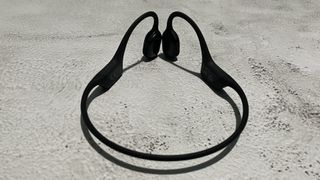
At first glance, the new headphones looks almost identical to their predecessor, the OpenRun, but there are a few significant differences. Firstly, the control buttons are larger, making it easier to adjust the volume, skip tracks, and power the headphones on and off without seeing what you're doing. Holding the volume down button during playback will tell you whether the power level is high, medium, or low.
Secondly, the charging connector has been repositioned. Like the OpenRun, the OpenRun Pro use a proprietary magnetic charging cable, which is much easier to connect than the fiddly micro-USB used by older models. However, for the newer model, Shokz has moved the charging port so it's no longer in line with the control buttons, making the cable easier to connect.
In all other respects, the two headsets are very similar. The OpenRun Pro are very lightweight and comfortable, even for long runs, and their light titanium construction means they never bounce as you move.
They have a water resistance rating of IP55, which means they'll be fine when you're sweating hard or running in the rain, but aren't suitable for swimming. For that, you'll want a set of waterproof headphones like the Shokz OpenSwim.
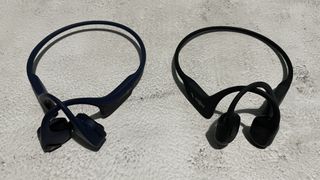
Performance
The sound quality of the Shokz OpenRun Pro is extremely impressive. The new bass transducers make a real difference, and the overall result far surpasses anything we've experiences from bone conduction headphones in the past. We particularly enjoy a rock and metal playlist while running, and the OpenRun Pro are the first model that really does justice to heavy music. It's not on a par with a pair of top-tier conventional headphones yet, but the gap is definitely closing.
The downside of the extra bass is that you don't just hear it – you can also feel it as a more noticeable buzz against your face that pulses with each beat. All bone conduction headphones produce this effect to some degree at high volumes, but it's particularly noticeable with the OpenRun Pro.
The sensation isn't uncomfortable, and unless you crank the volume up high it's little more than a tickle, but if you're wearing the headphones while concentrating at work then you might find it a distraction.
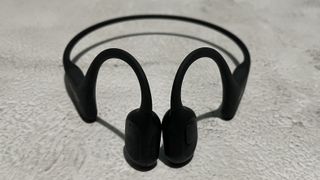
Another frequent problem with bone conduction headsets is the sound leakage; with no silicone seal between the transducers and the outside world, it can be easy for those nearby to overhear your songs, audiobooks and phone calls. You might annoy workmates in a quiet office if you crank up the volume on the OpenMove Pro, but when kept at modest levels they're the least leaky Shokz headset we've tested to date.
Despite the improved bass, ambient noise is still clear thanks to the open-ear design. Many noise-cancelling headphones have a 'transparency' mode that uses a microphone to transmit external sound to your ear, but this doesn't give the same directional awareness you get from bone conduction headsets.
When AfterShokz announced that it was rebranding as 'Shokz' in December 2021, it also launched a new version of its Aeropex bone conduction headphones with quick charging. This is a feature that it's carried over to the OpenRun Pro, and a five-minute charge while you're getting changed and lacing up your running shoes will provide 1.5 hours of playback.
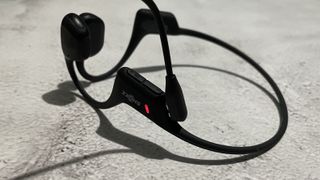
When the OpenRun Pro begin to run low on juice, a voice will warn you that it's time to charge them. You'll receive two warnings before the headset powers off, so if you're close to home or at your desk, you'll have time to plug them in.
A complete charge will keep your music playing for up to 10 hours (a figure matched in our tests) which is the most impressive battery life of any headset we've tested to date. If you've been turned off other bone conduction headphones due to their short playtime, it's well worth checking out the OpenRun Pro. You might be pleasantly surprised.
Buy it if
You want a set of all-purpose headphones
The OpenRun Pro are excellent running headphones, but they're also comfortable enough to wear all day at your desk, with sufficient battery life to keep you going all day. The improved on-board microphone makes them great for video calls, too.
You're planning long training sessions
The OpenRun Pro's quick charge feature is a game-changer if you're disorganized, but give them enough time to juice up fully and the headset will keep running for 10 hours. That's more than enough for all but the toughest ultra training sessions.
You enjoy heavy music
The OpenRun Pro is the first bone conduction headset we've tested that really does justice to bass-heavy music, and is a viable alternative to in-ear headphones when you need solid sound to keep you motivated.
Don't buy it if
You want noise cancelling
The appeal of bone conduction headphones is that they always allow ambient noise in. You could use them with a pair of earplugs to block out your surroundings, but that's no substitute for active noise-cancelling.
You're easily distracted
The tickle of the new bass transducers might be annoying if you're very sensitive to small distractions and want a pair of headphones to wear while you're wearing. The original OpenRun headset feels less 'buzzy' against your face.
You're on a tight budget
The Shokz OpenRun Pro are the most expensive bone conduction headphones we've tested. If you don't mind sacrificing some sound quality, the original OpenRun, and even the older Trekz Air are both good alternatives.
- We've tested and ranked the best running watches

Cat is TechRadar's Homes Editor specializing in kitchen appliances and smart home technology. She's been a tech journalist for 15 years and is an SCA-certified barista, so whether you want to invest in some smart lights or pick up a new espresso machine, she's the right person to help.

I tried the latest update to NotebookLM and it’s never been easier to make an AI podcast out of other people’s articles, for better or worse

Businesses still haven’t stopped using weak passwords, and it’s getting super risky
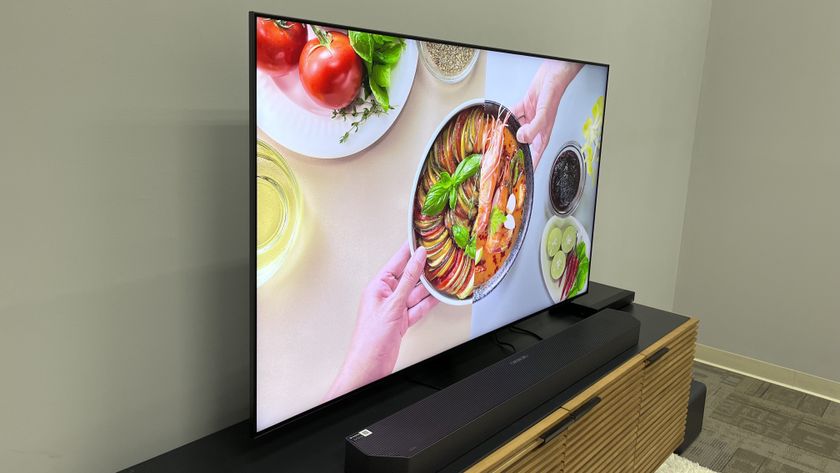
Samsung is being weirdly cagey about supporting Netflix's big HDR upgrade that's basically custom-made for its TVs
